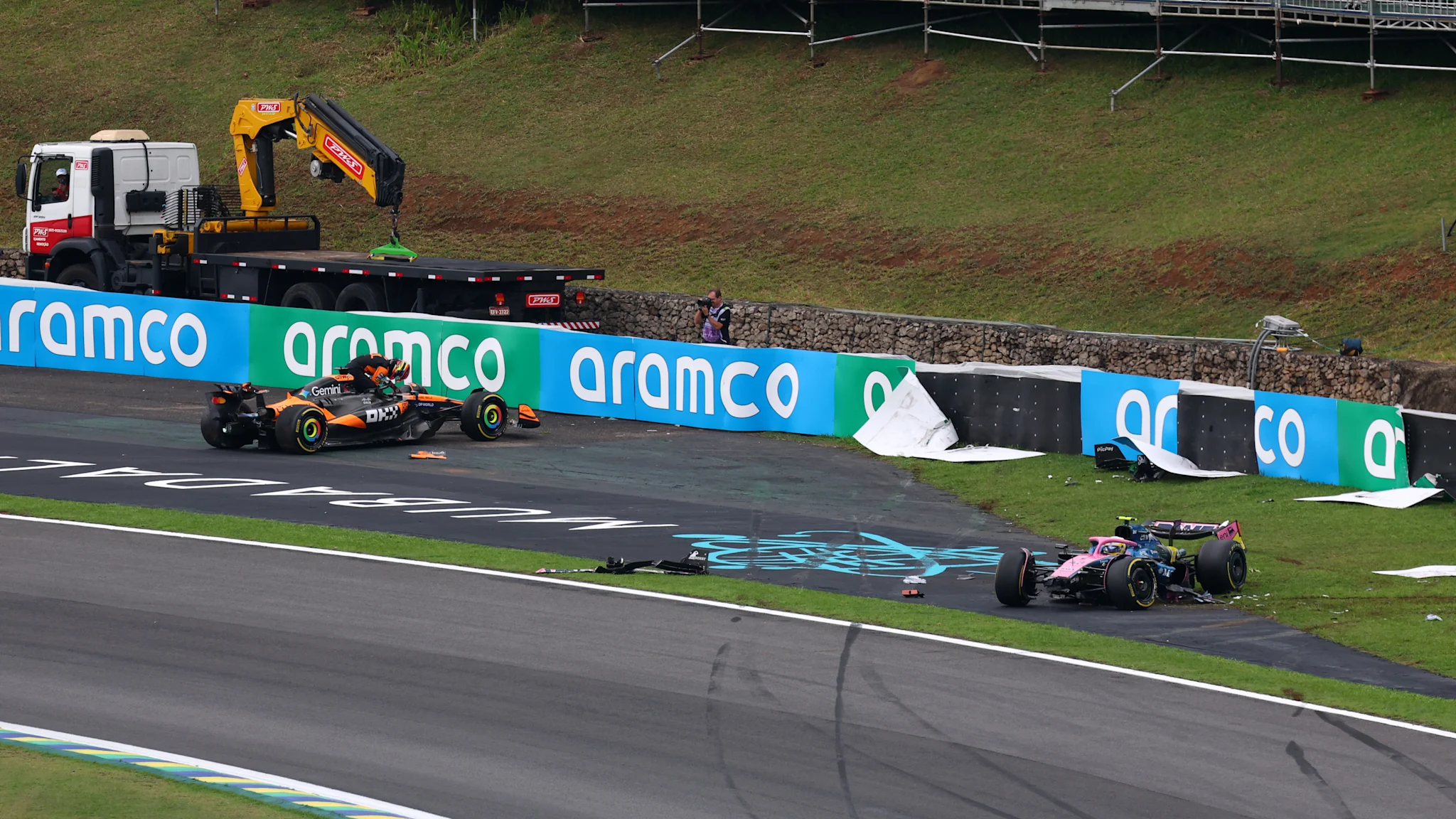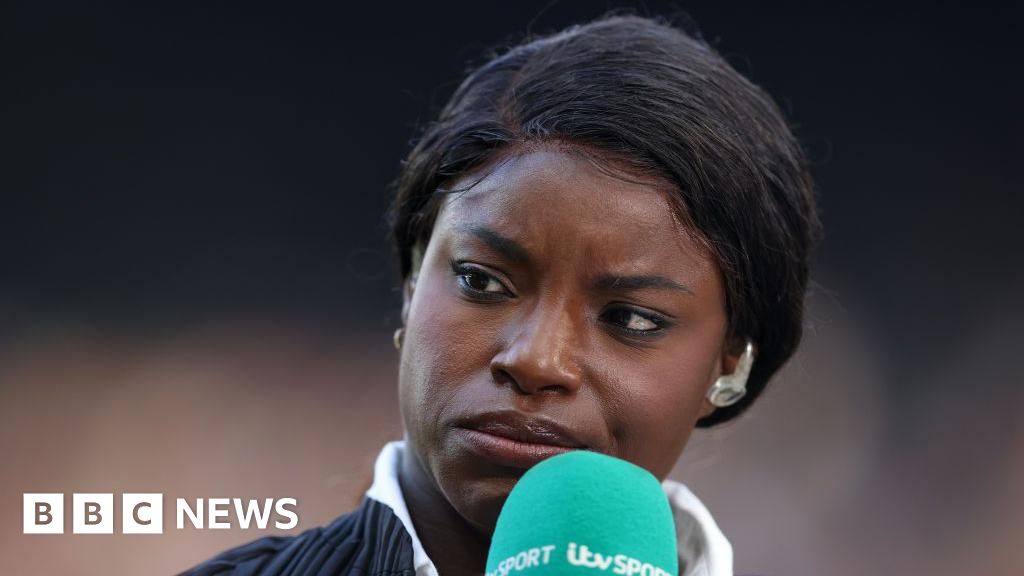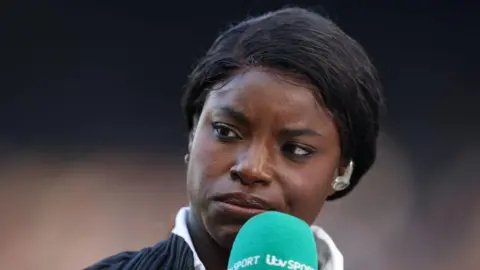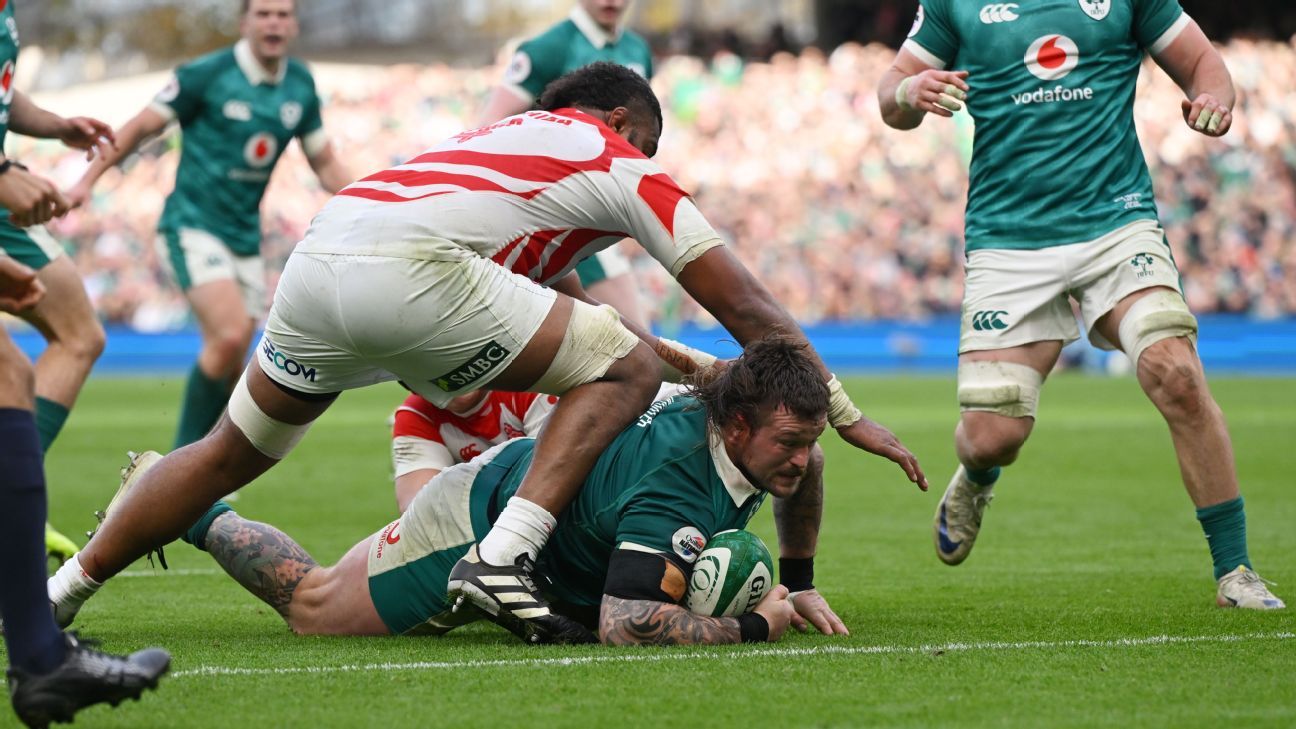- Russia’s Lavrov says work under way on Putin’s order on possible Russian nuclear test Reuters
- ‘They do not talk about it’: Trump claims Pakistan among countries testing nuclear weapons Dawn
- Can the United States Immediately Return to Nuclear…
Author: admin
-
Russia's Lavrov says work under way on Putin's order on possible Russian nuclear test – Reuters
-

Seatbelt T-Shirt Goes Viral After Introduction of E-Challan in Major Cities
A T-shirt printed with a black seatbelt design has gone viral in Pakistan after the launch of the new e-challan system in major cities.
The shirt, which gives the illusion of wearing a seatbelt, is making rounds on social media…
Continue Reading
-

Oscar Piastri crashes out of Sao Paulo Sprint in blow to championship hopes
Oscar Piastri dramatically spun into the barrier during the Sprint in Sao Paulo, putting a dent in his hopes of picking up maximum points in a remarkably tight championship battle.
Conditions around Interlagos were treacherous from the formation…
Continue Reading
-

Eni Aluko says ‘justice is served’ after Joey Barton’s conviction
Rumeana JahangirNorth West
 Getty Images
Getty ImagesEni Aluko (pictured) and Lucy Ward were working on ITV coverage when Joey Barton posted about them on social media Football pundit Eni Aluko said she was “glad justice has been served” after former England…
Continue Reading
-

Ireland vs. Japan: Hosts earn comfortable win with six-try display
Ireland bounced back from defeat to New Zealand by beginning their home autumn internationals with a 41-10 win over Japan in Dublin on Saturday.
Following last weekend’s deflating 26-13 loss to the All Blacks in Chicago, tries from Jack Crowley…
Continue Reading
-

Scientists Say They’ve Figured Out How to Transcribe Your Thoughts From an MRI Scan
We’re racing towards a future in which devices will be able to read our thoughts.
You see signs of it everywhere, from brain-computer interfaces to algorithms that detect emotions from facial scans. And though the tech remains…
Continue Reading
-

Veronika Kudermetova and Elise Mertens claim second season-ending championship title in doubles
Veronika Kudermetova and Elise Mertens have claimed the season-ending championship in doubles for a second time in four years.
The tennis duo won the 2025 WTA Finals title with a convincing triumph over Timea Babos and Luisa Stefani in Riyadh,…
Continue Reading
-

Common pesticides may cause testicular damage and lower sperm counts
Today’s large-scale farming methods make it nearly impossible to avoid consuming trace amounts of agricultural chemicals, many of which may harm the human body over time.
Researchers from George Mason University’s College of Public Health and…
Continue Reading
-

Clinically meaningful pivotal study results for olezarsen in sHTG presented as a late breaker at AHA Scientific Sessions
Sobi® (STO: SOBI) today announced that, the TIMI Study Group today has presented positive results from the pivotal Phase 3 CORE and CORE2 studies of olezarsen in people with severe hypertriglyceridemia (sHTG) at the American Heart Association 2025 Scientific Sessions. The studies met the primary endpoint, with olezarsen achieving a highly statistically significant placebo-adjusted mean reduction in fasting triglyceride (TG) levels of up to 72% at six months. The reductions were sustained through 12 months.
- Up to 72% placebo-adjusted mean reduction in fasting triglyceride levels at six months, with reductions sustained through 12 months
- 86% of olezarsen-treated patients achieved triglyceride levels less than 500 mg/dL
- First investigational treatment for sHTG to significantly reduce acute pancreatitis events
- Data simultaneously published in The New England Journal of Medicine
Olezarsen showed a highly statistically significant 85% reduction in acute pancreatitis events, the first time this has been achieved in sHTG. Additionally, 86% of olezarsen-treated patients achieved triglyceride levels less than 500 mg/dL. Olezarsen demonstrated favorable safety and tolerability.
In CORE and CORE2 43% of patients had extremely high levels of triglycerides ≥880 mg/dL, which is often equated to multifactorial chylomicronemia syndrome (MCS) due to the associated increased accumulation of chylomicrons. The effect on triglyceride-lowering and reduction in acute pancreatitis in the MCS subgroup were in line with the overall population.
These data were presented today during a late-breaking session at the American Heart Association (AHA) Scientific Sessions, taking place November 7-10 in New Orleans, and simultaneously published in The New England Journal of Medicine.
“CORE and CORE2 are the first studies to show a significant reduction in acute pancreatitis events in sHTG, with most patients on olezarsen achieving triglyceride levels below the risk threshold for these potentially life-threatening episodes,” said Nicholas Marston, M.D., M.P.H, presenting author, cardiologist, Brigham and Women’s Hospital, Harvard Medical School. “As a lipid specialist who takes care of sHTG patients, I have seen the major consequences of acute pancreatitis, including cases with recurrent events requiring frequent hospitalizations. Given the modest effects of conventional therapies, these impactful data are a welcome advance.”
“We are highly encouraged by the CORE and CORE2 results showing that olezarsen can help most patients with severe hypertriglyceridemia achieve safer triglyceride levels and significantly reduce their risk of acute pancreatitis,” said Lydia Abad-Franch, Head of R&D and Chief Medical Officer of Sobi. “It confirms our belief in the promise of olezarsen in a broader patient group and offers new hope for a tangible improvement in quality of life for those who have long struggled with limited treatment options. Sobi is moving forward with the European submission for olezarsen in MCS which we are planning for next year.”
Nearly 1,100 patients were enrolled in the CORE and CORE2 studies, which is the largest pivotal program ever conducted in sHTG, and patients were required to be on standard of care lipid-lowering therapy. The two phase 3, randomized, double-blind, placebo-controlled CORE and CORE2 trials assessed the impact of olezarsen SC every 4 weeks on fasting plasma TG levels and rates of acute pancreatitis in 617 and 446 patients with severe hypertriglyceridemia (sHTG, fasting plasma TG levels ≥ 500 mg/dL).
The CORE and CORE2 studies met the primary endpoint across doses, with olezarsen demonstrating an up to 72% (p<0.001) placebo-adjusted mean reduction in fasting triglyceride levels at six months. The reductions were sustained through 12 months. Olezarsen demonstrated a highly statistically significant 85% reduction in adjudicated acute pancreatitis events at 12 months (p<0.001). These results were based on a total of 22 events in 17 patients in the placebo group, compared to seven events in five patients in the olezarsen group (pooled 50 mg and 80 mg dose groups).
Olezarsen demonstrated a favourable safety and tolerability profile in the CORE and CORE2 studies. Adverse events were balanced across treatment arms (75% olezarsen 50 mg; 76% olezarsen 80 mg; 75% placebo). Serious adverse events occurred less frequently in the olezarsen group compared to placebo (9% olezarsen 50 mg; 11% olezarsen 80 mg; 14% placebo). The most common treatment-emergent events were injection site reactions, which were mostly mild and occurred more frequently with olezarsen (10% olezarsen 50 mg; 17% olezarsen 80 mg; 1% placebo).
An open-label extension (OLE) study of olezarsen for sHTG is ongoing. More than 90% of patients who completed CORE and CORE2 chose to continue into the OLE.
Sobi is preparing to submit a marketing authorisation application for olezarsen in MCS to EMA in 2026. Its partner Ionis is on track to submit a supplemental new drug application for sHTG to the FDA by the end of this year.
About the CORE and CORE2 Studies
CORE (NCT05079919; n=617) and CORE2 (NCT05552326; n=446), conducted with The TIMI Study Group, are Phase 3 global, multicenter, randomized, double-blind, placebo-controlled trials investigating the safety and efficacy of olezarsen for severe hypertriglyceridemia (sHTG). Participants aged 18 and older with triglyceride levels ≥500 mg/dL were enrolled. Participants were required to be on standard of care therapies for elevated triglycerides. At baseline, 43% of participants had baseline fasting triglycerides ≥880 mg/dL. Participants were randomized to receive 50 mg or 80 mg of olezarsen or placebo every 4 weeks via subcutaneous injection for 12 months. The primary endpoint is the percent change from baseline in fasting triglycerides at six months compared to placebo.
About Severe Hypertriglyceridemia (sHTG) and Multifactorial Chylomicronemia Syndrome (MCS)
Severe hypertriglyceridemia (sHTG) is defined by severely high triglycerides (≥500 mg/dL) and characterized by an increased risk of acute pancreatitis and other morbidities. Considered a medical emergency, acute pancreatitis causes debilitating abdominal pain that often requires prolonged hospitalization, can lead to permanent organ damage and can become life-threatening. Preventing the first attack is key. In people with triglycerides ≥880 mg/dL and/or a history of acute pancreatitis episodes, the risk of future attacks is even greater. Triglyceride levels ≥880 mg/dL are often equated to multifactorial chylomicronemia syndrome (MCS) due to the increased accumulation of chylomicrons at these extremely high triglyceride levels. Current standard of care therapies for sHTG or MCS and lifestyle modifications (such as diet and exercise) do not sufficiently or consistently lower triglyceride levels or reduce the risks in all patients. Approximately 2 million people are living with sHTG in the EU5, including approximately 700,000 who are considered having MCS.
About Olezarsen and the Sobi-Ionis partnership
Olezarsen is an investigational RNA-targeted medicine being evaluated for the treatment of sHTG. Olezarsen is designed to lower the body’s production of apoC-III, a protein produced in the liver that regulates triglyceride metabolism in the blood. Olezarsen is approved in the U.S. and the European Union as TRYNGOLZA® for adults with familial chylomicronemia syndrome (FCS).
Olezarsen is being developed by Ionis Pharmaceuticals, Inc. Sobi and Ionis have entered into a license agreement under which Sobi receives exclusive rights in countries outside the U.S., Canada, and China to commercialise olezarsen as a potential treatment for familial chylomicronemia syndrome (FCS) and severely elevated triglycerides.
Sobi®
Sobi is a global biopharma company unlocking the potential of breakthrough innovations, transforming everyday life for people living with rare diseases. Sobi has approximately 1,900 employees across Europe, North America, the Middle East, Asia and Australia. In 2024, revenue amounted to SEK 26 billion. Sobi’s share (STO:SOBI) is listed on Nasdaq Stockholm. More about Sobi at sobi.com and LinkedIn.
Contacts
For details on how to contact the Sobi Investor Relations Team, please click here. For Sobi Media contacts, click here.
Continue Reading
-

The Apple Watch SE 3 and Lego’s Star Wars Advent Calendar are our favorite deals this week
Hey, all! The first week of November ushered in dozens of early Black Friday deals, and many of the best ones are still available as we delve further into the weekend. Some of our favorite fitness trackers have already plunged to new lows, for…
Continue Reading